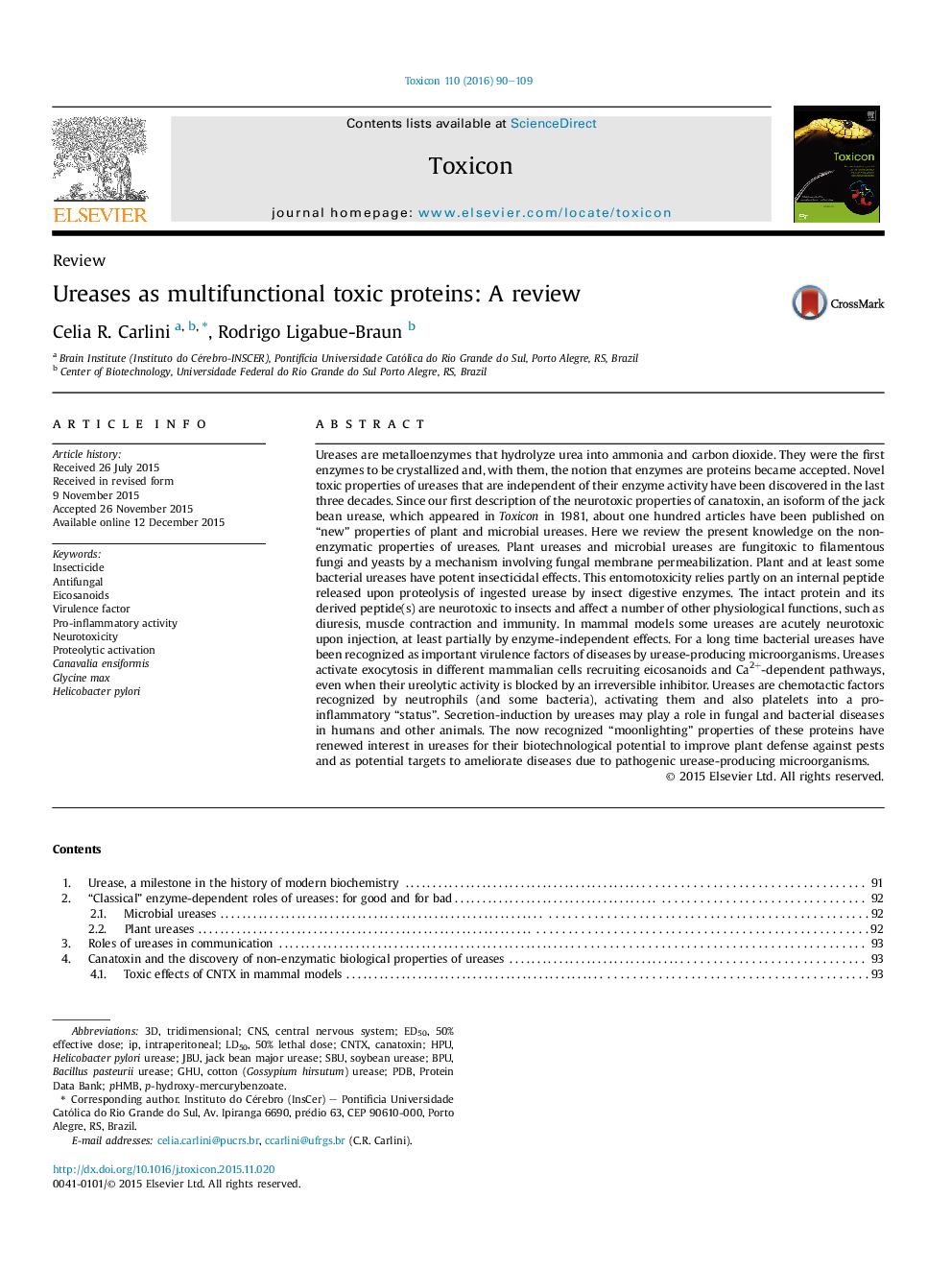| کد مقاله | کد نشریه | سال انتشار | مقاله انگلیسی | نسخه تمام متن |
|---|---|---|---|---|
| 2064136 | 1544126 | 2016 | 20 صفحه PDF | دانلود رایگان |
• Ureases are Ni-dependent enzymes that cleave urea into ammonia and carbon dioxide.
• Ureases are multifunctional toxins with enzyme-dependent and – independent effects.
• Ureases have a defense role in plants as insecticidal and antifungal agents.
• Neurotoxic and pro-inflammatory effects of ureases contribute to microbial diseases.
Ureases are metalloenzymes that hydrolyze urea into ammonia and carbon dioxide. They were the first enzymes to be crystallized and, with them, the notion that enzymes are proteins became accepted. Novel toxic properties of ureases that are independent of their enzyme activity have been discovered in the last three decades. Since our first description of the neurotoxic properties of canatoxin, an isoform of the jack bean urease, which appeared in Toxicon in 1981, about one hundred articles have been published on “new” properties of plant and microbial ureases. Here we review the present knowledge on the non-enzymatic properties of ureases. Plant ureases and microbial ureases are fungitoxic to filamentous fungi and yeasts by a mechanism involving fungal membrane permeabilization. Plant and at least some bacterial ureases have potent insecticidal effects. This entomotoxicity relies partly on an internal peptide released upon proteolysis of ingested urease by insect digestive enzymes. The intact protein and its derived peptide(s) are neurotoxic to insects and affect a number of other physiological functions, such as diuresis, muscle contraction and immunity. In mammal models some ureases are acutely neurotoxic upon injection, at least partially by enzyme-independent effects. For a long time bacterial ureases have been recognized as important virulence factors of diseases by urease-producing microorganisms. Ureases activate exocytosis in different mammalian cells recruiting eicosanoids and Ca2+-dependent pathways, even when their ureolytic activity is blocked by an irreversible inhibitor. Ureases are chemotactic factors recognized by neutrophils (and some bacteria), activating them and also platelets into a pro-inflammatory “status”. Secretion-induction by ureases may play a role in fungal and bacterial diseases in humans and other animals. The now recognized “moonlighting” properties of these proteins have renewed interest in ureases for their biotechnological potential to improve plant defense against pests and as potential targets to ameliorate diseases due to pathogenic urease-producing microorganisms.
Figure optionsDownload as PowerPoint slide
Journal: Toxicon - Volume 110, February 2016, Pages 90–109
